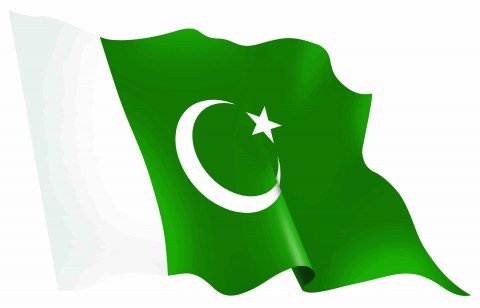by David Steven | May 8, 2014 | Conflict and security, Cooperation and coherence, Global Dashboard, South Asia
 I’m in Lahore launching the third report from Pakistan’s Next Generation Task Force – I’m the Task Force’s director of research.
I’m in Lahore launching the third report from Pakistan’s Next Generation Task Force – I’m the Task Force’s director of research.
In the first report, we looked at the economic potential of young people in Pakistan and its ability to collect a demographic dividend as growing numbers of them enter the workforce.
In a second report, published in the run up to last year’s election, we explored the political implications of an electorate that is increasingly dominated by young voters, who are more likely to be educated, urban, and middle class than their parents.
Our third report focuses on how violence and conflict are shaping young lives. At its heart are 1,800 personal accounts which provide a stunning series of insights into a silent epidemic of political, criminal, domestic and sexual violence.
We demonstrate debilitating economic, social and physical damage, and a largely hidden problem – mental health impacts from post-traumatic stress disorder, depression, self-harm, and suicide.
The report calls for urgent action to give a voice to the survivors and victims of violence, respond to their mental and emotional health needs, create opportunities for young people to opt out of violence, and promote reconciliation at provincial and national levels.
It’s a tough report that often makes for uncomfortable reading, but I think it’s essential not only for those interested in Pakistan’s future, but for all those engaged in the broader debate of how to build peaceful and inclusive societies.
You can download the report here.
by Seth Kaplan | Jun 3, 2013 | Conflict and security, Economics and development, South Asia

The Limited Access Order (LAO) conceptual framework is an excellent way to understand why developing countries work the way they do, analyze their political and economic dynamics, and formulate policy ideas appropriate to their context. Its focus on power, violence, rents, and elite bargains provides far greater explanatory and predictive power than the standard template that uses developed countries as a model for how countries ought to work. As such, everyone in the development field working in a policymaking role should make use of it.
Created by Nobel Prize winner Douglass North, John Wallis, Steven Webb, and Barry Weingast, the LAO framework argues that:
No one, including the state, has a monopoly on violence . . . An LAO reduces violence by forming a dominant coalition containing all individuals and groups with sufficient access to violence . . . The dominant coalition creates cooperation and order by limiting access to valuable resources – land, labor, and capital – or access [to] and control of valuable activities – such as contract enforcement, property right enforcement, trade, worship, and education – to elite groups . . . The creation and distribution of rents therefore secures elite loyalty to the system, which in turn protects rents, limits violence, and prevents disorder most of the time. (more…)
by Seth Kaplan | Sep 5, 2012 | Economics and development, South Asia
 Like many struggling countries, Pakistan’s two most critical problems are feckless leaders and a feeble state. Can donors do anything to help get such countries’ political economy moving in the right direction?
Like many struggling countries, Pakistan’s two most critical problems are feckless leaders and a feeble state. Can donors do anything to help get such countries’ political economy moving in the right direction?
I recently convened a working group of leading Pakistani development professionals and outside experts at the Global Economic Symposium (GES) to discuss just such this question. (more…)
by Seth Kaplan | Jul 25, 2012 | Africa, Economics and development, South Asia

Language is one of the most neglected areas in the development field. It barely registers on any agenda to help poor countries despite its importance to a number of crucial areas and it being a barrier to progress in many fragile states. Why is this? (more…)
by Seth Kaplan | Feb 13, 2012 | Conflict and security, Economics and development, South Asia
 Most people in the West believe that Pakistan is an unstable country on the verge of imminent collapse or an explosion of violence. It is consistently portrayed—by politicians, policymakers, and the media—as the most dangerous and dysfunctional state in the world, struggling with terrorism, an out-of-control military, and interreligious conflict.
Most people in the West believe that Pakistan is an unstable country on the verge of imminent collapse or an explosion of violence. It is consistently portrayed—by politicians, policymakers, and the media—as the most dangerous and dysfunctional state in the world, struggling with terrorism, an out-of-control military, and interreligious conflict.
And yet, Pakistan is included on Goldman Sachs’ list of the next eleven (N-11) most important emerging markets. Although it has (along with Nigeria and Bangladesh) “broad and systematic issues across a range of areas” that will prevent it from fully delivering on its growth potential, the country’s large population (it currently has 180 million people) assures its inclusion. Indeed, within a generation, Pakistan will have the fourth largest number of people in the world, behind only India, China, and the United States, and be a market too significant to ignore.
It was possible to see this potential before 2007. Ranked highly for the openness of its markets, the country drew billions in foreign investment in the mid-2000s while chalking up growth rates of seven percent per year. Its equity markets were one of the best performers worldwide. The middle class was expanding rapidly, reaching into the tens of millions. Goldman predicted in 2007 that Pakistan could “ultimately have the potential to become similar to the smaller of today’s G7 in terms of size.”
Of course, much has changed since 2007. Or has it? (more…)
 I’m in Lahore launching the third report from Pakistan’s Next Generation Task Force – I’m the Task Force’s director of research.
I’m in Lahore launching the third report from Pakistan’s Next Generation Task Force – I’m the Task Force’s director of research.


